Dinitrogen and dihydrogen react with each other to produce ammonia according to the following chemical equation :
N2(g)+H2(g)→2NH3(g)
(i) Calculate the mass of ammonia produced if 2.00×103g dinitrogen reacts with 1.00×103 g of dihydrogen.
(ii) Will any of the two reactants remain unreacted ?
(iii) If yes, which one and what would be its mass ?
N2(g)+3H2−−→2NH3(g)1 mol3 mol2 mol28gm6gm34gm
28 gm N2 react with 6 gm H2
∴2000gmN2→(?)
=2000×628=428.57gH2
(i) Here, N2 is limiting reagent So, created volume of ammonia.
From 28 gm N2, 34 gm NH3 create.
∴2000gmN2→(?)
=2000×3428=2428.57gNH3
(ii) Here, N2 is limiting reagent So, H2 become excess. (unreacted)
(iii) Remaining mass of H2 gas =1000−428.57
=571.43g
Topper's Solved these Questions
- SOME BASIC CONCEPTS OF CHEMISTRYBook:KUMAR PRAKASHANChapter:SOME BASIC CONCEPTS OF CHEMISTRYExercise:Section - A (Try Your Self )
Explore 24 Videos
- SOME BASIC CONCEPTS OF CHEMISTRYBook:KUMAR PRAKASHANChapter:SOME BASIC CONCEPTS OF CHEMISTRYExercise:Section - B (Objective Questions)
Explore 51 Videos
- SOME BASIC CONCEPTS OF CHEMISTRYBook:KUMAR PRAKASHANChapter:SOME BASIC CONCEPTS OF CHEMISTRYExercise:Section - A (Questions) (1.10 Stoichiometry and Stoichiometric Calculations)
Explore 5 Videos
- SAMPLE QUESTION PAPER FOR FIRST EXAMBook:KUMAR PRAKASHANChapter:SAMPLE QUESTION PAPER FOR FIRST EXAMExercise:SECTION -D
Explore 2 Videos
- STATES OF MATTER Book:KUMAR PRAKASHANChapter:STATES OF MATTER Exercise:QUESTION PAPER FROM MODULE (SECTION - A)
Explore 4 Videos
Similar Questions
Dinitrogen and dihydrogen react with each other to produce ammonia according to the following chemical equation:
N2(g)+3H2(g)→2NH3(g)
a. Calculate the mass of ammonia produced if 2.00×103g dinitrogen reacts with 1.00×103g of dihydrogen.
b. Will any of the two reactants remain unreacted?
c. If yes, which one and what would be its mass?
View SolutionDinitrogen and dihydrogen react with each other to produce ammonia according to the following chemical equation:
N2(g)+H2(g)→2NH3(g)
a. Calculate the mass of ammonia produced if 2.00×103g dinitrogen reacts with 1.00×103g of dihydrogen.
b. Will any of the two reactants remain unreacted?
c. If yes, which one and what would be its mass?
View Solution
Knowledge Check
Which of the following is correct for the reaction? N2(g)+3H2(g)→2NH3(g)
AKP=KcBKP<KcCKP>KcDPressure is required to predict the correlationWhich one of the following equation is correct for the reaction, N2(g)+3H2(g)→2NH3(g)?
A3d[H2]dt=2d[N2]dtB2d[N2]dt=13d[H2]dtC2d[NH2]dt=−3d[H2]dtD3d[NH2]dt=−2[H2]dtThe % yield of ammonia as a function of time in the reaction N2(g)+3H2(g)⇔2NH3(g),(g)ΔH<0 at (P,T1) is given below
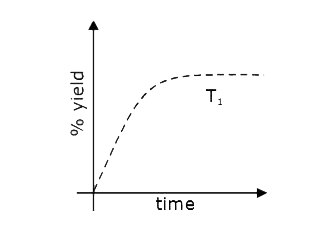 A
A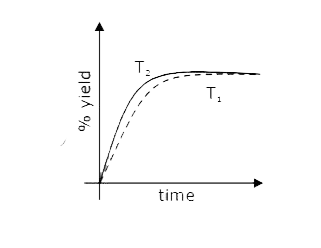 B
B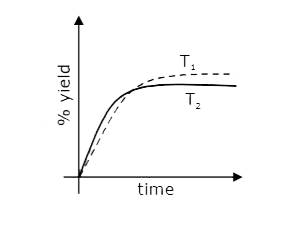 C
C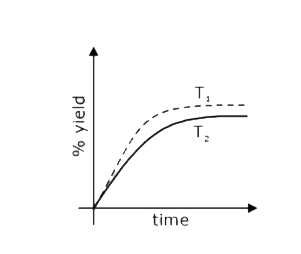 D
D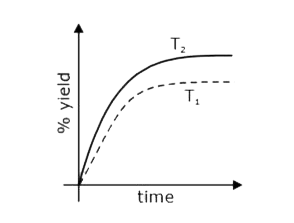
Dinitrogen and dihydrogen react with each other to produce ammonia according to the following equation : N2(g)+3H2(g)→2NH3(g)
(i) Calculate the mass of ammonia produced if 2.00×103 g dinitrogen react with 1.00×103 g of dihydrogen.
(ii) Will any of the two reactants remain unreacted?
(iii) If yes, which one and what would be its mass?
View SolutionWhich of the following is correct for the reaction? N2(g)+3H2(g)→2NH3(g)
View Solution3.00 g of H2 react with 28.00 g of O2 to yield H2O.
Calculate the mass of one of the reactants which remains unreacted.
View Solution3.0 g of H2 reacts with 29.0 g of O2 to yield H2O.
Calculate the amount of one of the reactants which remains unreacted.
View SolutionWhich one of the following equation is correct forr the reaction : N2(g)+3H2(g)→2NH3(g) ?
View Solution
